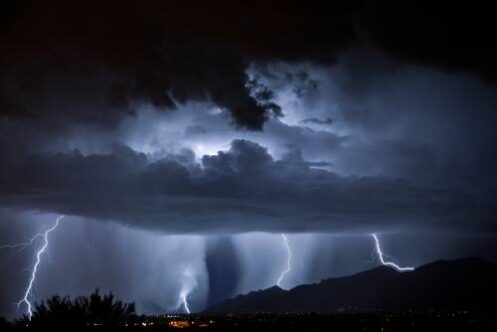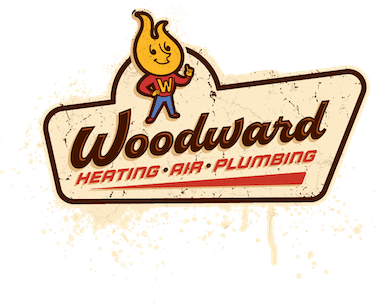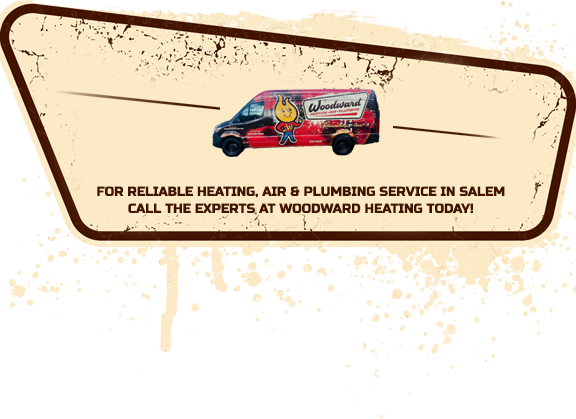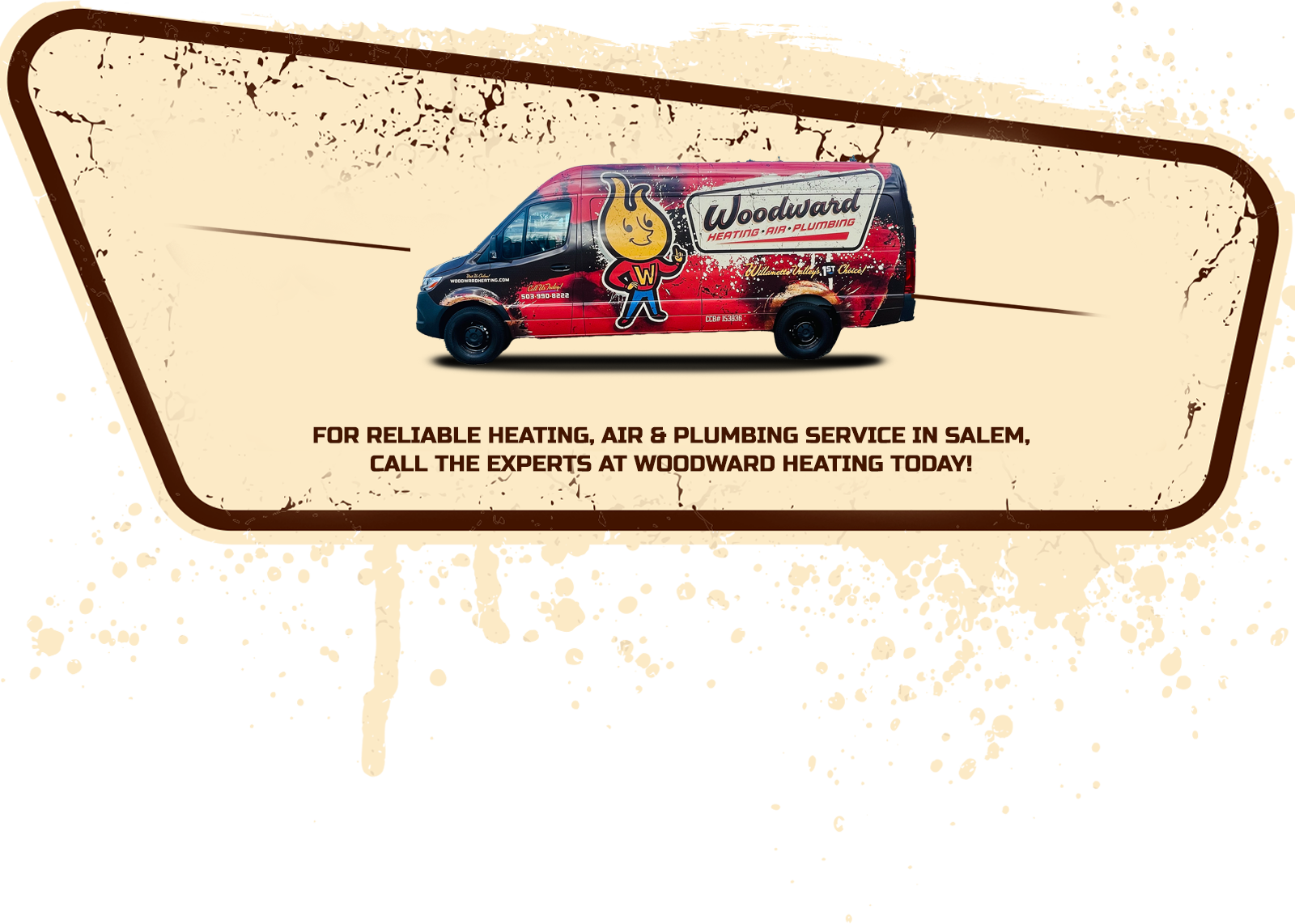
Spring storms bring not just rain and thunder but also power surges that can seriously mess with your HVAC system. These quick bursts of electricity might not seem like a big deal, but they can damage sensitive components or knock out your cooling when needed. That’s why surge protection and storm prep matter this time of year. At Woodward Heating Air Plumbing in Salem, OR, we help homeowners get ahead of the weather with smart steps that keep your equipment running and your home comfortable, no matter what’s happening outside.
Why Spring Weather Creates a Risk for Your HVAC System
You probably look forward to fresh air and milder temperatures when spring rolls around. But as much as the season brings welcome change, it also brings unpredictable weather. That mix of warm and cool air leads to thunderstorms and, with them, power surges. These surges don’t need to be major to create trouble. Even a quick flicker can send a jolt through your HVAC system. You might not notice right away, but internal components like the compressor or control board can take the hit. The tricky part is damage that could show up later as unpredictable behavior or complete failure. If your HVAC equipment is the most expensive appliance in your home, protecting it during storm season just makes sense.
You already rely on your system to keep things comfortable. So, if lightning strikes nearby or a tree takes down a power line, your HVAC system is left vulnerable. Some homes lose power completely during a surge. Others stay online. But the short burst of high voltage does its damage quietly. Without protection in place, these risks add up. You can’t control the weather, but you can get ahead of the impact with a few practical steps.
How Power Surges Damage HVAC Equipment
Picture a power surge like a wave of electricity crashing through your home’s wiring. Under normal conditions, your system receives a steady, controlled flow that keeps everything working as it should. However, when a surge hits, that voltage jumps quickly. This sudden spike can overwhelm anything connected to the power, especially electronics that rely on stable currents to function. Your HVAC system, which relies on circuit boards, sensors, and compressors, is right in the line of fire.
One big surge can fry a control board instantly. Smaller, repeated surges wear down parts slowly like constant friction dulls a sharp blade. You might notice your AC turning on and off randomly or not blowing air as strongly as before. These are signs that something inside isn’t working the way it should. Catching problems early helps, but it’s even better to block that surge in the first place.
Your HVAC equipment isn’t cheap to replace. Even a single component like a variable-speed blower motor can cost more than you’d expect. If spring weather keeps rolling in with heavy wind and rain, you don’t want each storm testing your system’s limits and causing a need for premature heating or air conditioner replacement.
What a Whole-Home Surge Protector Does
A whole-home surge protector connects to your electrical panel and acts like a gatekeeper. Excess voltage from outside, such as from a lightning strike or a blown transformer, redirects that power away from your appliances. That includes your HVAC system. You don’t have to unplug everything or stand by the breaker box during every storm: The device steps in automatically.
These protectors are different from the power strips you use at your desk. They’re hardwired into your home’s electrical system and provide coverage for anything connected to it. That means your furnace, air conditioner, refrigerator, and other wired-in appliances all benefit.
While no protector can block every type of surge, especially a direct lightning strike, they handle the vast majority of voltage spikes from utility issues or weather events. For most homes, that layer of protection is the difference between a quick recovery and a costly repair call.
Why Surge Damage Isn’t Always Obvious
One of the most frustrating parts about surge damage is that it doesn’t always show up right away. Your system might keep running, but something may feel off. Perhaps the air doesn’t feel as cool, or the system sounds different. That’s because a damaged board or motor doesn’t always fail. It can keep working, but not as well.
Months later, when you finally call in a technician, you might hear that a voltage spike weakened a part. By that time, the warranty may not apply, and the repair costs fall on you. Regular tune-ups can help catch this kind of wear, but prevention still wins every time. Investing in protection now can save you from guessing later.
How a Surge Can Shorten the Life of Your System
You expect your HVAC system to last at least a decade. But that life span depends on more than just how often you use it. Surges quietly eat away at the inner workings of your equipment. Even if you never see visible damage, the impact builds.
A control board that runs fine today might lose its ability to communicate properly after multiple surges. A compressor that usually cycles off cleanly might struggle and overheat. When parts work harder than they should, the whole system loses efficiency. That means higher energy bills and more frequent service calls.
Extra Steps You Can Take During Spring Storm Season
While a surge protector does most of the heavy lifting, a few extra habits can also help you stay ahead of spring storm risks. If you know bad weather is coming and you’re going to be home, you can shut off the power to your HVAC system from the breaker. This isn’t always necessary, but it can offer extra peace of mind during severe conditions.
After a power outage, wait a few minutes before turning your system back on. Let the power stabilize so your system doesn’t have to jump back into action the second electricity returns. This helps avoid startup stress that can strain the motor or compressor.
If your home uses a generator, make sure your HVAC system is compatible with it. A poor connection or wrong voltage can do more harm than good. Talk with a licensed technician if you’re not sure how your system should be connected.
Smart HVAC Systems Still Need Protection
Many newer HVAC systems include smart features, like Wi-Fi thermostats or self-monitoring diagnostics. These tools add convenience, but they also add sensitive components that can be damaged by power surges. A smart system might be able to tell you when something’s wrong, but it can’t protect itself from high voltage.
Some newer systems feature built-in protection, but that protection only goes so far. The safest route is to combine the tech your system already has with external surge protection that adds another layer.
When to Talk With a Pro About Protection
If you’re not sure whether your home already has a surge protector or if you’re thinking about upgrading your HVAC system soon, talk with a a heating and cooling maintenance technician. They can check your system, recommend the right equipment, and explain what to expect.
Consider adding point-of-use protectors to individual systems for extra defense. These get installed at the equipment itself and provide another buffer between the system and the electrical current. Spring storms don’t need to wreck your comfort or your budget. With the right planning, you can ride out the season without wondering what might break next.
Protect Your Electrical System
You can’t stop a spring storm, but you can protect your HVAC system from its effects. Routine inspections, and a few simple habits go a long way when storms roll in. If you’re not sure where to start, the team at Woodward Heating Air Plumbing is here to help you prep. We also offer new construction, air conditioning, heating, and plumbing services.






